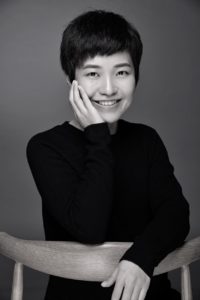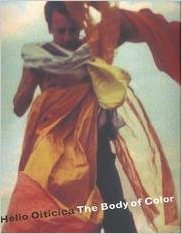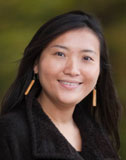by Rebecca Schneider
The essay begins:
When you get a pebble in your boot—flesh, stone, and leather rub, irritating each other into and out of comfort. This essay is like that. In 2012, I stumbled over a minor comment made on April 19 at the conference “Making Time: Art Across Gallery, Screen, and Stage” at the Arts Research Center at the University of California, Berkeley, curated by Shannon Jackson and Julia Bryan-Wilson. The comment was made by Sabine Breitweiser, who at that time was the chief curator of media and performance art at the Museum of Modern Art in New York (MoMA). Speaking of “acquiring actions” when “collecting” performance, Breitweiser said, almost as an aside during the question and answer session after her talk: “If live artworks are collected correctly, I believe they can acquire a patina over time.” The comment puzzled me, and I scribbled it down for memory’s sake with a question mark at the lead. What could it mean?
My difficulty was surely disciplinary. In a blog posting circulated in advance of the same conference, Malik Gaines, who was also an invited speaker, had written:
Visual art and performance are in a classic bad relationship. Art stays for the sex, the good times, the feeling of being alive. But art will belittle performance in public, will call it late at night but won’t let it stay over, doesn’t really believe what performance does is valuable. Art’s esteemed family only barely tolerates the relationship. Performance stays with its more powerful partner for the money, for the stature, the trips to Europe, for feeling like it belongs to something, for fear of having to go back to that old senile boyfriend, the Theater. How else can it support itself? But performance never feels like it really belongs in art’s world. It’s always using the wrong fork at dinner.
Indeed, as a scholar of performance studies trained in a history of actions that include mime, theater, dance, and other historical forms more “theatrical” and less “object art,” I felt like an awkward guest at the dinner table in relationship to Breitweiser’s comment. I looked up “patina” in various dictionaries, but it only turned up the meaning I anticipated. Patina is
- A thin coating or layer; an incrustation on the surface of metal or stone, usually as a result of an extended period of weathering or burial; a green or bluish-green film produced naturally or artificially by oxidation on the surface of bronze and copper, consisting mainly of basic copper sulphate …
- A gloss or sheen or finish; that on wooden furniture produced by age and polishing …
- An acquired accretion of an abstract quality; a superficial impression or appearance.
None of these definitions works simply or seamlessly with the immediate definition of performance art as typically featuring “live presentation.” Though definitions vary quite wildly across dictionaries—some describe performance art as essentially “collaborative,” others as “solo,” some say “theatrical,” some refer to its “fine art context”—they almost all use the word “live.” And though synonyms for “patina” like “distressing” or “weathering” might appeal to tragedians or expressionists (anyone might agree that a live performance of King Lear would employ weathering and distressing), “oxidation” is less quick to comply with disciplinary orientations tuned to dance or theater. And yet, Andy Warhol’s Oxidation Paintings might seem closer kin to live performance than the average “bluish-green film” on the skin of a local monument. Warhol’s Oxidation Paintings, or piss paintings as they are commonly known, might be read as something of a theatrical parody, making base bodily fluid the agent of oxidation. Still, might one not easily argue that patination may be standard “senile boyfriend” theater as usual? That is, the crusty monument model might resemble the standard American theater to the degree that such theater often trots out productions so encased in layers of accrued acting convention that they can barely strut and fret (spread by the deadly MFA model of training in the United States and the tendency of the professional theater to produce nothing but replicant white and male playwriting). But if this is the case, why would we desire patination for performance-based art in general?
To make a long story short, I scrapped the paper I had carried with me to the conference, and, in the wake of Breitweiser’s comment, I began to track a new set of thoughts, live, as it were. I wanted to try to respond to the notion of a patinal live, but I knew the fork I would take would be different, and I wondered, as well, what or who exactly was being served by thinking of patination as desirable. The essay that follows tracks thoughts that, like thought, do not always track in a linear fashion but overlap, change direction, cross paths, interrupt each other, get swept under, and tend toward general promiscuity. My hope is not that one thought might align with another, or one discipline with another, for in that parallelism nothing can amount to encounter. Rather, I hope that the thoughts collected here might swerve, jump, bend—we could say dance—not under protective cover of singular disciplinary orientation, but open to weathering, on the move. Continue reading …
This essay asks what happens to live performance over time: Can it develop a patina, as claimed by at least one major art curator? Are intervals between or among performances part of a work itself, like skin or film that grows in the cracks of a work? Or is performance itself a kind of patination process? In short, can liveness be finished?
 REBECCA SCHNEIDER is Professor of Theatre Arts and Performance Studies at Brown University. She is the author of The Explicit Body in Performance (l997); Performing Remains: Art and War in Times of Theatrical Reenactment (2011), and Theatre & History (2014) and editor and author of many anthologies, essays, journal special issues, and book series.
REBECCA SCHNEIDER is Professor of Theatre Arts and Performance Studies at Brown University. She is the author of The Explicit Body in Performance (l997); Performing Remains: Art and War in Times of Theatrical Reenactment (2011), and Theatre & History (2014) and editor and author of many anthologies, essays, journal special issues, and book series.

 WANG JING
WANG JING REBECCA SCHNEIDER
REBECCA SCHNEIDER
 GU YI
GU YI